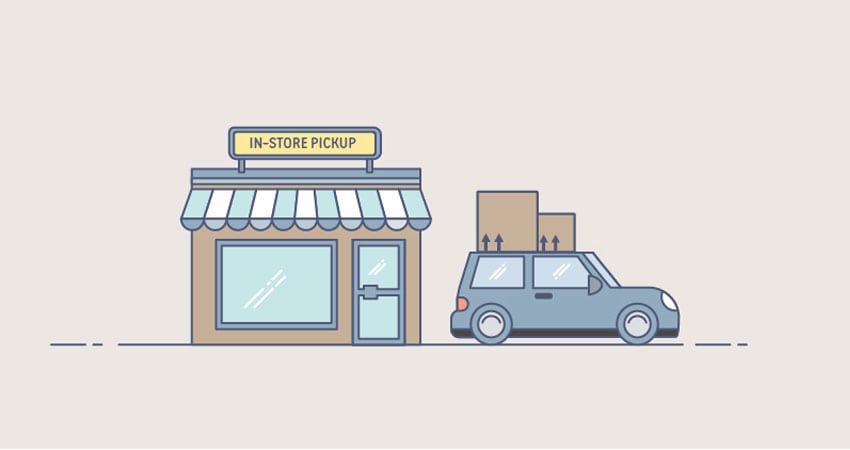The accessibility of ecommerce has conditioned shoppers to expect speed and convenience from any retailer they engage with, regardless of channel. Thus store-based retailers have invested in omnichannel capabilities to bridge the physical/digital gap.
One of the most popular tactics to deliver omnichannel convenience has been buy online, pickup in store (BOPIS). More than half of consumers in the U.S. have used this service in the past year, with adoption rising. Retailers also benefit from in-store upsell opportunities. The International Council of Shopping Centres found 61% of shoppers using retail BOPIS (or click and collect on the continent) bought more items when picking up their order.
While 88% of the top 100 retailers have adopted BOPIS, the payout has been poor as only 10% of them say their omnichannel services are being executed profitably. They’re also falling short of customer expectations for a frictionless experience. Only 32% using BOPIS over the last six months describe the process as “smooth.” It may have brought in new sales but it has added an organizational burden and wasted labor hours.
What’s Going Wrong?
While the demand for omnichannel services like BOPIS is rising, many retailers lack the processes and technology needed to effectively execute these initiatives. Specifically, they struggle to execute BOPIS profitably because they:
- Lack precision in locating items: Unlike warehouses where product locations are more accurately maintained and associate tasks are more predictable, stores are fluid with product location changing frequently.
- Lack agile tools to notify and direct associates: To ensure they’re ready for in-store pickup orders, many retailers have an associate stand in front of a terminal to simply wait and watch for customers. This wastes labor and hurts overall productivity.
- Treat all tasks equally: Regardless of when the customer picks up their order, retailers expend a lot of energy and effort to meet the specified service level. Many even prioritize order preparation over servicing live customers.
Passing Costs to Customers
Even as retailers struggle to meet customer expectations, inefficient processes keep most from executing profitability. Seventy-three percent of retail CEOs say the cost of omnichannel fulfillment is going up. To seek profitability, many plan to raise online order fees and free shipping minimums, passing the costs onto customers who have no incentive to play along and will simply shop elsewhere.
The Fix: Connect All Associates
One of the best ways to fix the challenge of omnichannel profitability is to transform processes and use new technology to help associates be more agile and work on demand. This requires all of them to be connected to each other and to critical business systems like inventory and order management. Unfortunately, only 11% of associates have access to smartphones or tablets to check inventory or order status.
An associate mobility platform that connects all employees with enterprise systems in real time lets retailers direct the flow of work to the right associates at the right time, reducing waste and boosting profitability. Benefits include:
- Better order status intelligence: New order status updates are send directly to associates on demand and in real time for faster fulfillment. Order information can be delivered based on role, location and availability of associates.
- On-demand pick alerts and tasks: They can be assigned to the right associate at the right time, wherever they are in the store, based on contextual data like location and skillset, speeding up the process and reducing overall labor.
- Direct, instant access to enterprise intelligence: Universal connection to enterprise apps like OMS and inventory management ensures that items can be found and fulfilled from a single location in an organized, coordinated way. This boosts pick rates and impacts profitability.
- Frictionless, personalized pickup: Delivery of real-time customer arrival notifications to the store fulfillment team improves the process. Customers can even see which associate is working on their order. Wait time is significantly reduced and shoppers receive a personalized experience, driving affinity and loyalty.
By creating a agile, always-connected associates with a mobile platform, retailers can more flexibly fulfill online orders in store, increase responsiveness to customer needs and reduce costs through efficiency gains. Thus it both increases customer satisfaction and improves the bottom line.
Adam Silverman is SVP of Marketing for Theatro

